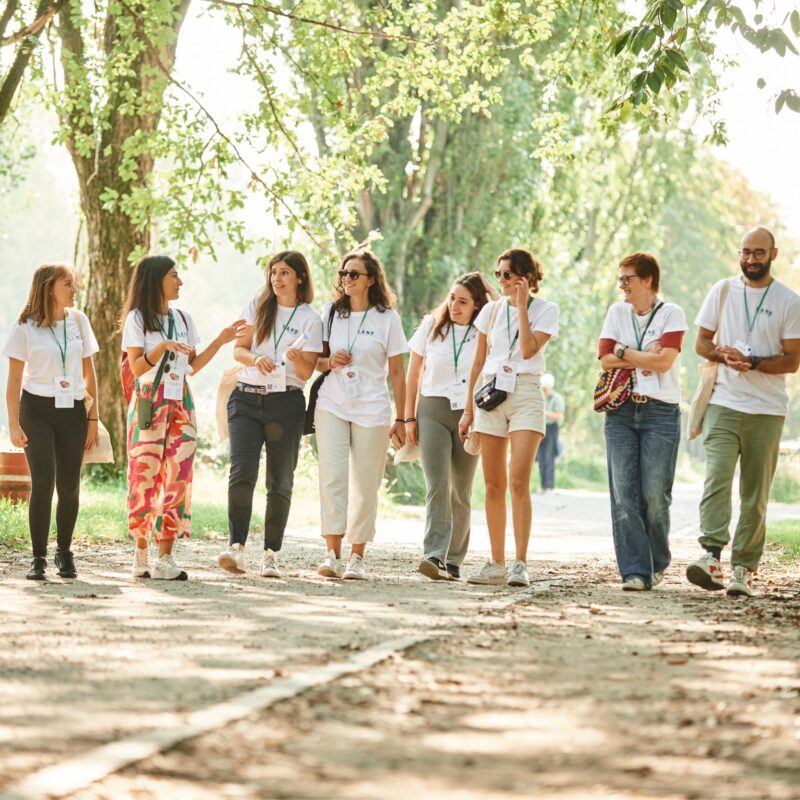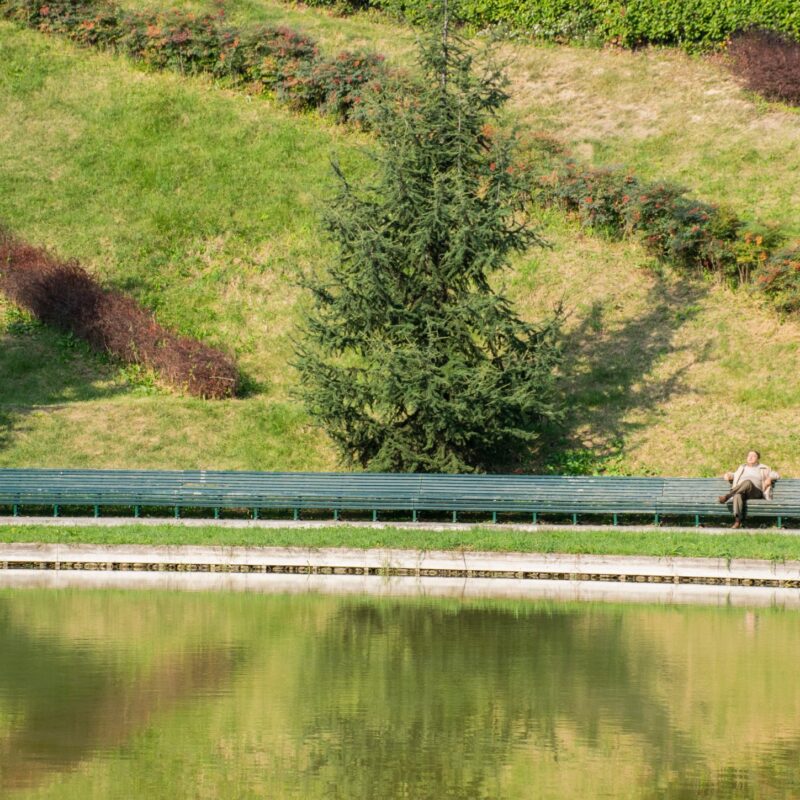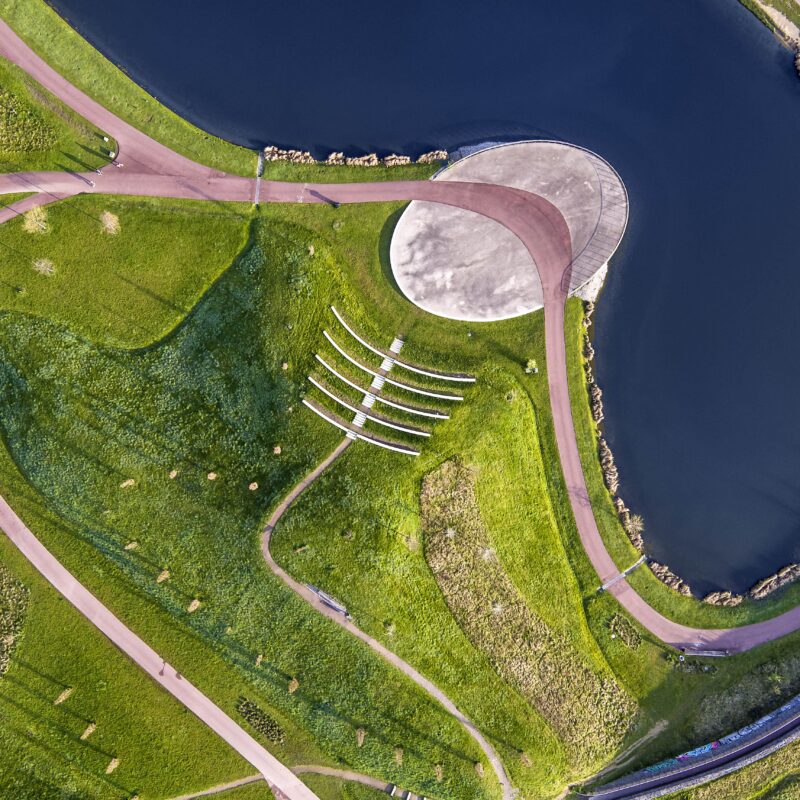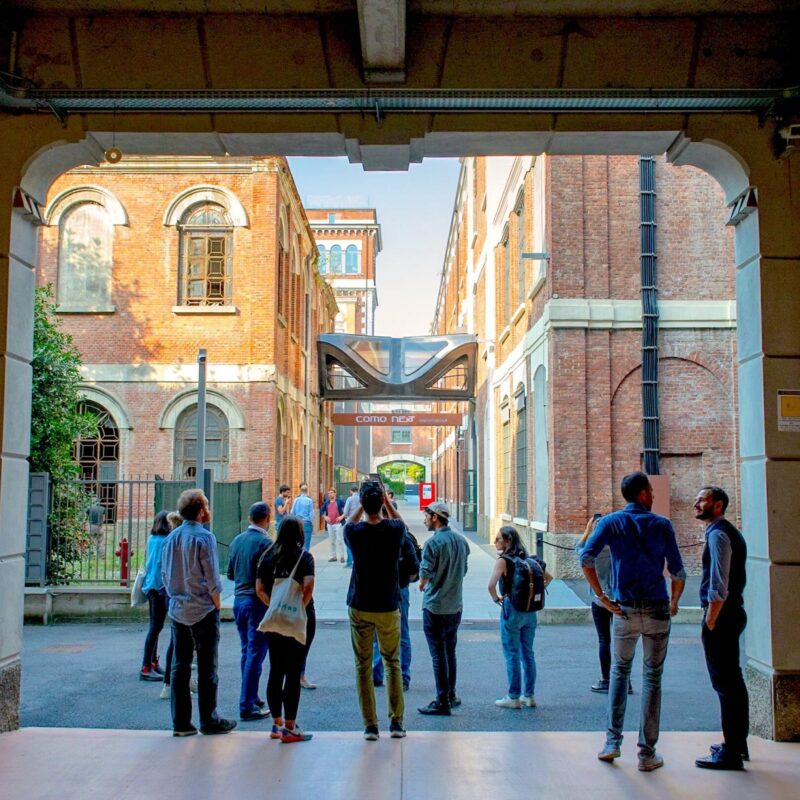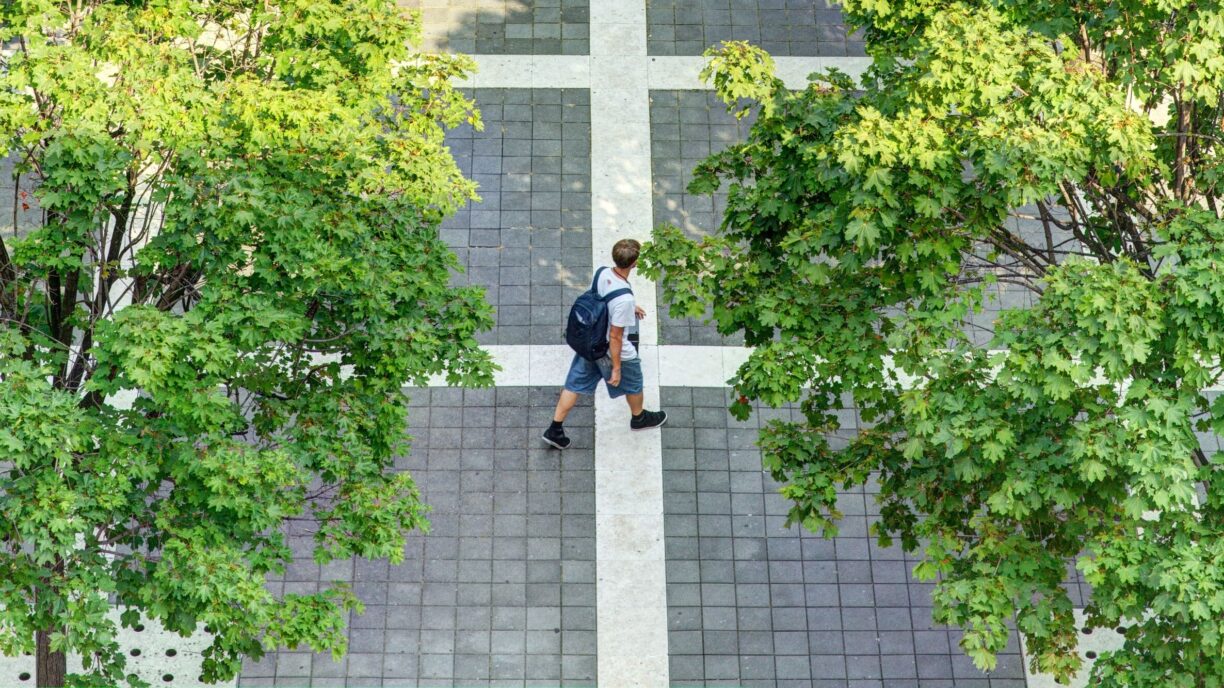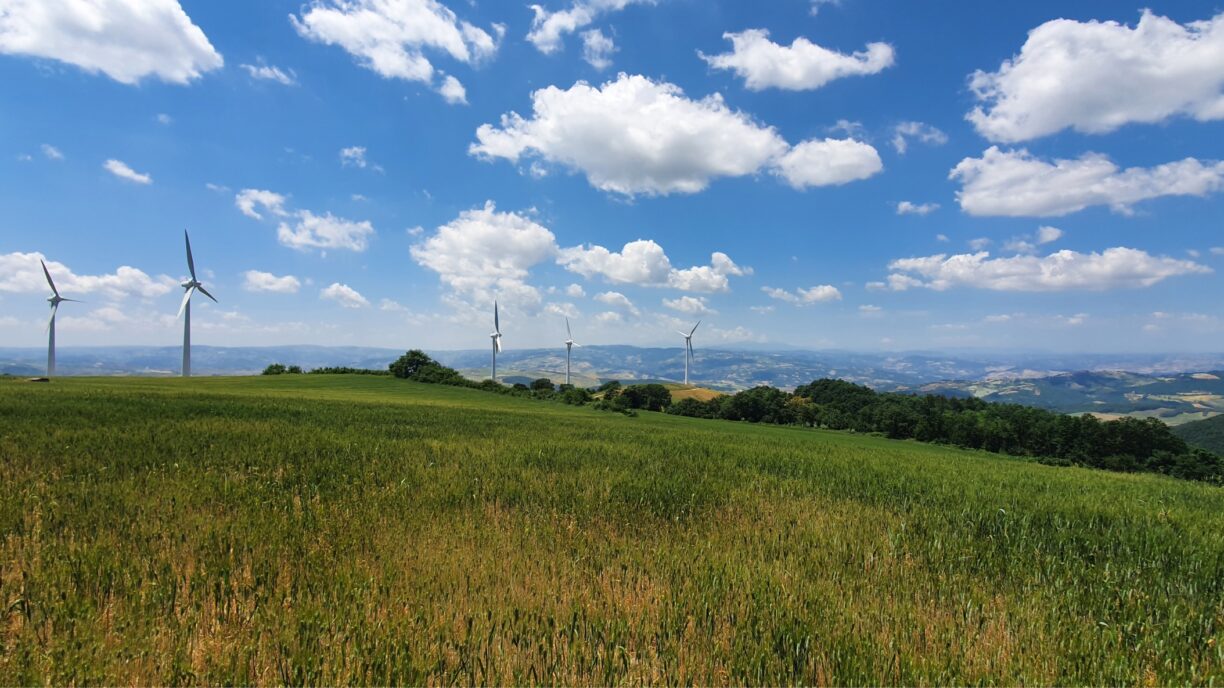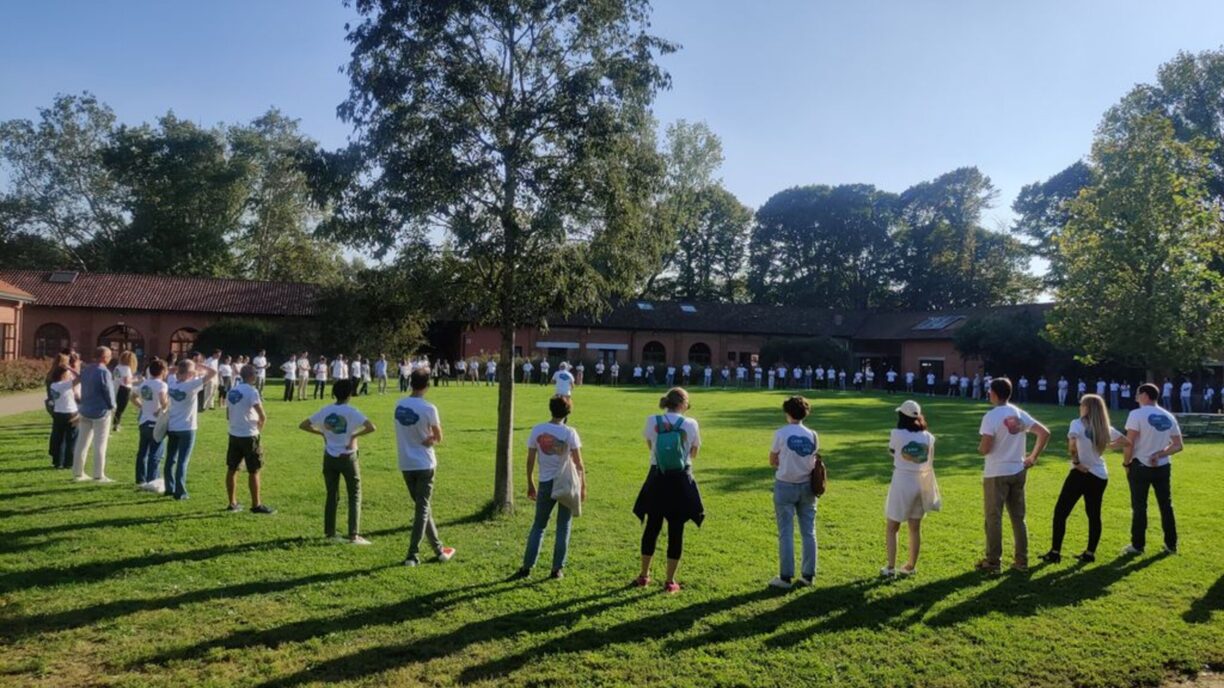
The Tension Between Distance and Identity
Relationships between Life and Landscape.
A discussion with the writer Volker Demuth
Landscape’s attraction and rebirth in our society, individual responsibility in the climate crisis, land consumption, the relationship between town and country, and the tasks of our civilization: explorations of the writer Volker Demuth, whose essay collection”Unruhige Landschaften”¹ was recently published.
The author, born in 1961, studied philosophy, literature and history at the universities of Oxford and Tübingen. For several years he was a professor of media theory (giving up his chair in 2004), and he now lives as a freelance writer in Berlin and theUckermark district. The text is a compilation of excerpts from a radio broadcast with Volker Demuth for Deutschlandfunk.
We must abandon the notion that landscapes begin at the edge of cities. They begin in the city, in every home.
What’s alluring about landscape?
Unlike Nature, which was ideally thought of as an independent “thing-in-itself” (to Hegel it was “otherness” par excellence), landscape is an enormously multi-faceted system of references, a bewildering sphere of relationships. The shift from a Nature-like “thing-in-itself” to landscape as a form of relationship presupposes a sensual, emotional, and cognitive encounter.
We smell landscapes, listen for their sound, feel their temperature and the wind flowing through them, their moisture on our skin, we see the atmosphere of their light and the interplay of their shapes and forms. And we become aware of this concentrated, dense sensuality in a culturally formed, unmistakable way. Nature as a thing-in-itself, or the abstract notion of it, transforms into the experience of landscape only when there is an aesthetic encounter.
What importance does landscape have today?
Far out and difficult to see through the relentless advance of urban agglomeration, landscape is surreptitiously moving to center stage. For the first time in history, all landscapes on Earth are exposed to human influence and civilization. We’re no longer confronted by the alien, the natural, in landscapes; instead, we encounter ourselves, our own human imprint, our self-made mess, our own advancing specters. Each of us is party to the landscape in which we live and through which we move, we’re all complicit.
Where does this human imprint of ours lead?
Uninhabited or sparsely inhabited landscapes account for ninety-seven percent of the Earth’s land surface, with half the world’s population concentrated on just one percent of the land. Yet humans now cast a shadow over every land-scape on the planet, even the most remote.
This is increasingly evident as landscapes are visibly and ever more seriously impacted by fire, drought, and flooding. Indeed, the media now bombards us daily with images of devastating typhoons, clear-cut rainforests, dwindling polar ice and melting glaciers, encroaching deserts, and vast inland lakes silting up.
Signs of a coming disaster?
The economic systems of disaster have become a lucrative and global demonstration of our time. But media presentations mislead us when they suggest that we can expect the apocalypse at some more or less distant point in the future. The apocalypse isn’t some sudden event, it’s a period of time. It’s not something that’s going to happen, it’s something that is
And our reaction to it?
Our lifestyles are characterized by a late-modern inconsistency. Even in our mobile environments with their urban nomadism, where every day we’re out and about in the city, moving through countless metropolises year after year, we feel a growing desire to immerse ourselves in natural landscapes when we go on vacation, to gently sink back into something we deeply desire. When we can, we travel to idyllic Caribbean beaches, go hiking in the Andes, rafting on Nepalese rivers.
At the same time, on our mobile screens, we’re witnessing the Arctic cryosphere melting away as we await the impending, apocalyptic demise of huge swaths of the planet
But isn’t that schizophrenic?
It seems that most of us have grown used to compartmentalizing landscape into two sections: one that offers an experience, a sort of wellness space, a green area where we can kick back, replenish our stressed-out psyches, and experience Nature when we get sick of civilization; and the other a space that we use, that we exploit, to make as much money as possible. While one space–the romanticized idyll–is to be protected and preserved, the other is ruthlessly exploited, ravaged and plundered.
The schizophrenia is obvious. It’s comparable to the almost insatiable desire for powerful off-road vehicles, now that transport infrastructure has finally removed all obstacles and paved every back road. The loss of wild landscape is obscured by this symbolic pretension and transformed into technical consumption, into simulation.
Is landscape consumption increasing in all directions?
Since industrialization first began in the 1700s, we have expanded arable land fivefold, and pastureland has increased from two percent to one quarter of the earth’s surface today. Not to mention our increasingly congested urban areas and road systems. Furthermore, land consumption and soil sealing continue to attack landscapes, devouring a landscape area approximately the size of Frankfurt every year in Germany alone.
We now know that the cultivation of natural areas and the urbanization of cultural landscapes generally destroys ninety percent of the original organisms living there.
So what do we do?
Since we can’t just deny responsibility for the collapse of more and more landscape habitats, the unavoidable conclusion is that a universal landscape policy must be developed. Because the threats and increasing risks to landscapes are politicizing even lands that until recently were considered beyond politics: glacier lakes, grasslands, shifting sand dunes, frog ponds.
Climate change, environmental degradation, and continued world population growth have transformed the once promising future into a fear-filled vision. Melancholy, once an expression of sadness for past loss, has now shifted direction: we now mourn the future.
How can we restore the future?
First of all, it’s clearly difficult to create an inner connection to landscapes that have been abused. Their deleterious structure refuses to become part of our identity. Consequently, communal and individual life disassociates from the landscape. For this reason as well, it’s essential to build balanced landscapes that consider the interests of all living beings and topographic features. This requires a very delicate touch to preserve the fine spatial balances of non-human life, and a radical slow-down in landscape tempo, thus allowing biological balances to be re-established and natural spaces to be maintained in a state of active tranquility, with changes occurring gradually over time to allow living organisms to make the necessary modifications and adaptations.
Moreover, we can no longer get around the need to bring the tense relationship between town and country into the landscape. This task includes using expanded urban areas and the frayed edges of cities to create new hybrid forms of urban-rural life that, aided by digital technologies, can lead to local solutions for organizing work and life, with a more place-centered lifestyle that can restore our firm sense of responsibility for where we live.
Do town and country create unity through multiplicity?
Technical infrastructure such as power lines, photovoltaic plants, pipelines, water supply, communication networks and server parks form the technosphere of sprawling urbanism. But the basis for the diversity of life on the surface is what’s underground. Every day, countless soil organisms are buried under asphalt, concrete and cobblestones in landscapes in order to meet the city’s metabolic needs. We must abandon the notion that landscapes begin at the edge of cities.
They begin in the city, in every home, every office. With the awareness that the production of food and other essential items must not be jeopardized, balanced and intact landscapes filled with diverse life are among the most basic of human needs, especially when we consider that all species, genes, and ecosystems are interconnected. Perhaps we’ve finally reached the point where people increasingly recognize this, where it becomes clear that as humans, we always have a relationship to landscape and certain places.
Because landscapes create places for us, they become stages for actualizing space, or more precisely, for localizing our lives. A historical, political and mental topography is formed within them. In short, landscape is an experiential and narrative space where we encounter ourselves and others, in the tension between distance and identity.
What does this mean for our way of life?
We need to introduce a more fundamental change and thus redefine the meaning of the word progress. Indeed, as balanced landscapes, broadly speaking, embody precious symbiotic relationships and commodities, they inevitably become the scene of a revolution that arises from within themselves–from soil, plants, animals, air, and water: a revolution in the human way of life.
But aren’t we on the way to recognizing this in many places?
Through the landscape, the civilization of arrogance and presumption looks itself in the face, injured, unreconciled. It may be that the civilizational sickness that confronts us in the landscape has become so obvious that it’s sparked a growing demand for new cultural approaches to it. But what’s certain is that in this planetary age, now more than ever landscapes are not just the private property of the few. Rather, as resources for the future, they will have to be protected as a public good much more extensively than before.
Such a systemic change, however, also places responsibility on society as a whole, and thus on each individual. If nothing else, it brings other consumption patterns into the discussion, as well as an ambitious modesty in which “more and more” isn’t good enough. And it means considering new forms of a landscape-using economy, which could include legal provisions, incentives and institutional directives to guide reform, and social participation that could breathe new life into the model of the commons, of communal landscape ownership.
Landscape at the center of society…
So there are good reasons, which are in our own interest, to let the landscape renaissance become a velvet landscape revolution. Nothing is remote in the global world. The Arctic and the Amazon jungle aren’t somewhere else, they’re not far away. They’re here, under our feet. Our present civilization can no longer postpone its duty to renaturalize denatured urban areas and regenerate degenerated landscapes.
Compilation and questions (June 2023) by Henning Klüver.
(Translated from the German original)
Read other Articles from this Edition
